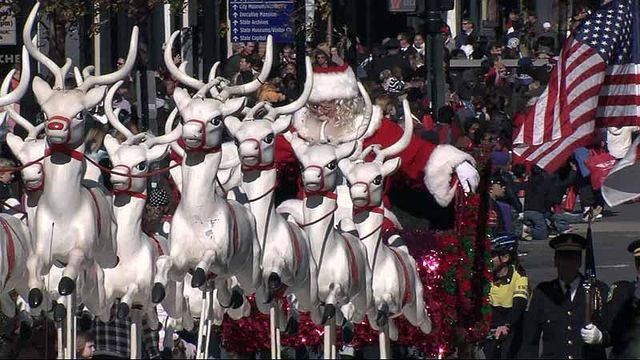Santa's mastery of science creates Christmas magic
How does Santa Claus make it all the way around the world on his sleigh, stopping at every chimney from here to Timbuktu, delivering presents to good boys and girls in just one merry night? For decades, mystified scientists have chalked up Santa's power to the inexplicable wonder of magic, but a North Carolina State University aerospace engineer said Wednesday that Santa is, in fact, a scientific genius.
Posted — UpdatedHow can he tell who's been naughty or nice? How does he know each child's secret Christmas wishes? And whose little hands really make all of those toys?
For decades, mystified scientists have chalked up Santa's power to the inexplicable wonder of magic, but a North Carolina State University aerospace engineer said Wednesday that Santa is, in fact, a scientific genius.
The magic, says Larry Silverberg, is real.
"Santa is not just a jolly old elf," Silverberg said. "He really has an understanding of engineering, technology, science that's far beyond our own."
It all starts at the North Pole, Silverberg has found, where Santa has an elaborate technical setup that rivals the nerve center of the CIA.
An underground antenna listens to children's thoughts.
"He takes those signals and finds out whether the child has been naughty or nice, and ultimately, what present the child wants," Silverberg said.
One of Santa's greatest inventions, the relativity cloud, bends time and space to allow for his round-the-world Christmas journey.
"Inside the relativity cloud, Santa and his reindeer have six months to deliver the presents, but outside the relativity cloud, only a wink of an eye goes by," Silverberg said.
That's why so few children have had encounters with the jolly old elf as he sneaks their presents under the tree.
"When you look from inside the relativity cloud, outside everything appears frozen. When you’re outside the relativity cloud, like a child seeing Santa when he’s delivering the presents, it all happens so quickly," Silverberg said. "The spottings are very, very quick."
Getting toys inside the house is another hurdle for Santa. Not every toy can squeeze easily down the chimney – even Santa's round, jolly belly can be a pretty tight fit.
Luckily, he has mastered nanotechnology.
"It's so heavy, all the presents, when you add them up, that to carry them on the sleigh would actually be prohibitive," Silverberg said.
So, he uses a nano-toymaker to grow the presents under the tree.
"A nano-toymaker is a device that, you take materials like cookies and soot and indigenous materials, and you actually form and manufacture (toys)," Silverberg said. "(It's) like a whole manufacturing plant, but small-scale, you make the entire present right there under the tree, wrapping and all."
As a scientist, Silverberg looks forward to Christmas each year, when he can ponder the remarkable accomplishments of one of the greatest pioneers in his field. Last year, he and some of his colleagues had the privilege of visiting Santa's workshop at the North Pole.
"The way (Santa) actually gets all the presents to kids, it's the most remarkable feat that we know of," he said. "So Santa welcomed us to show us a little bit about his technology, so that we could actually take advantage of it. Santa not only helps us with presents, he also helps us understand technology."
• Credits
Copyright 2024 by Capitol Broadcasting Company. All rights reserved. This material may not be published, broadcast, rewritten or redistributed.






